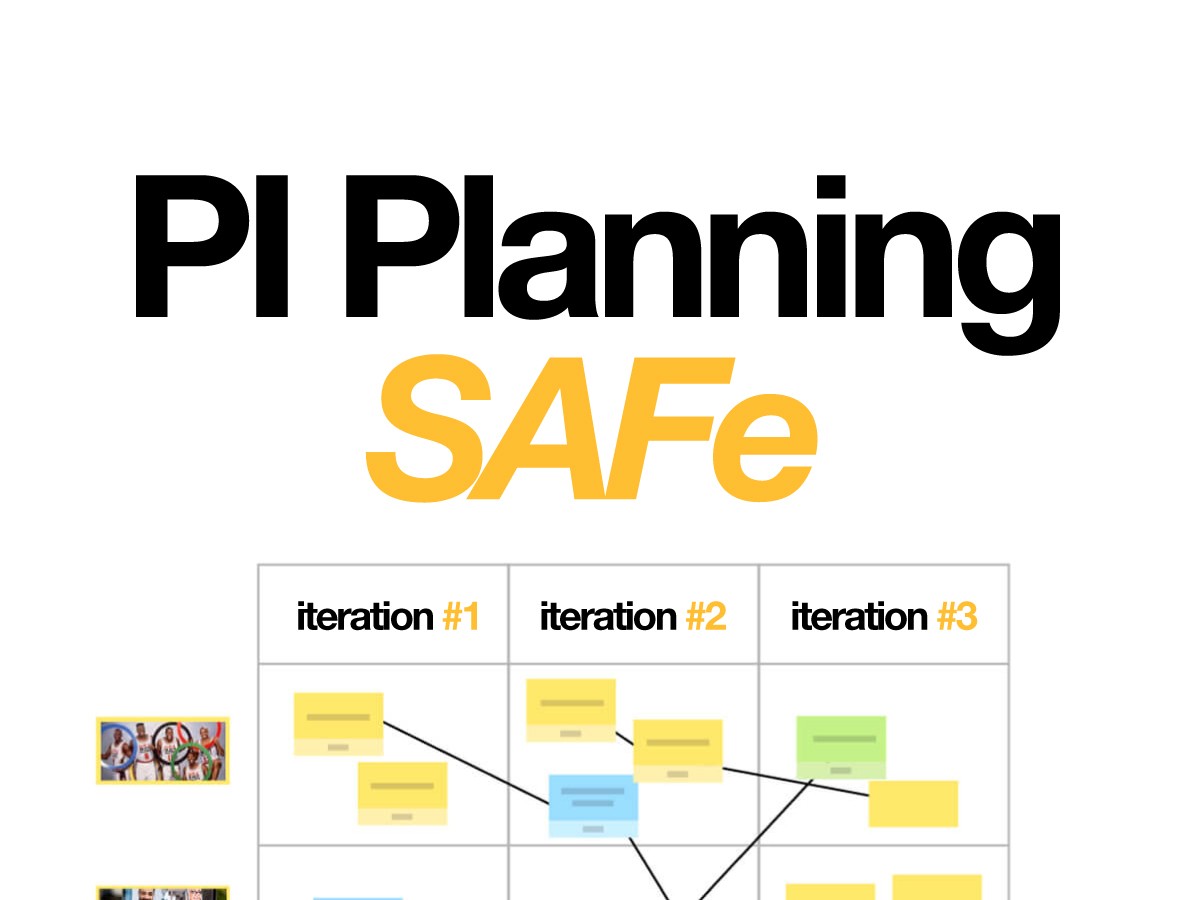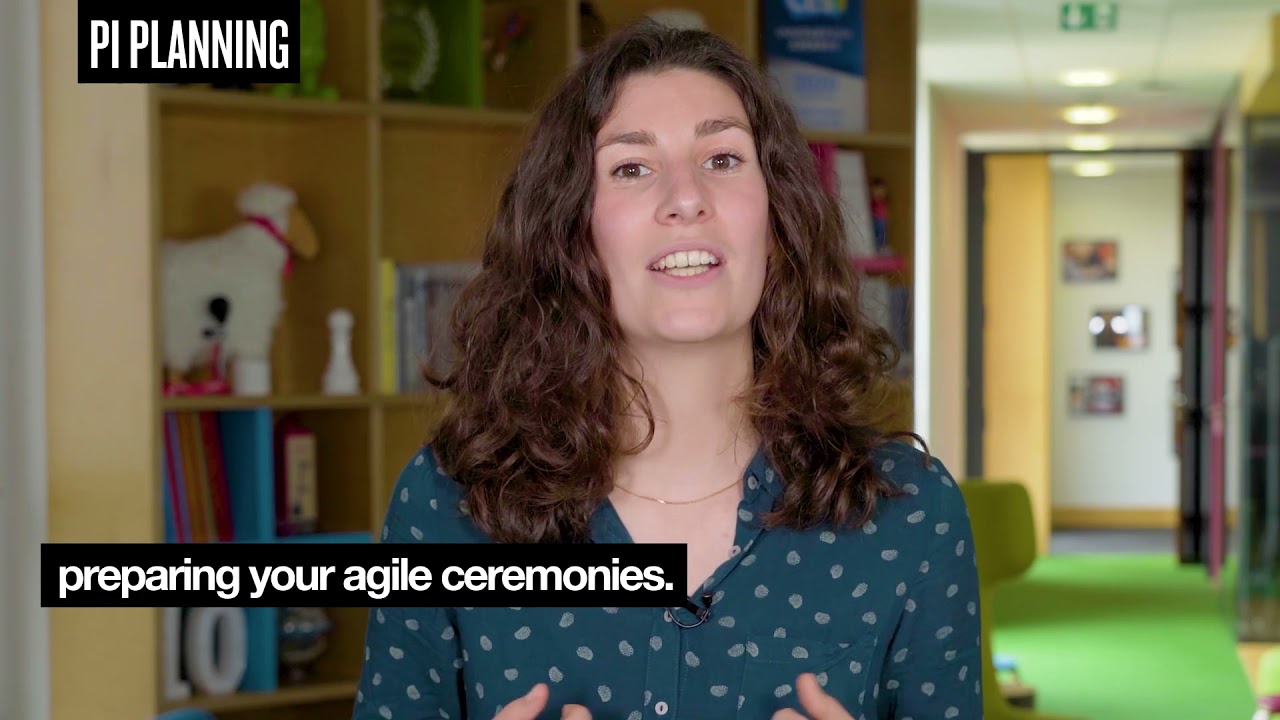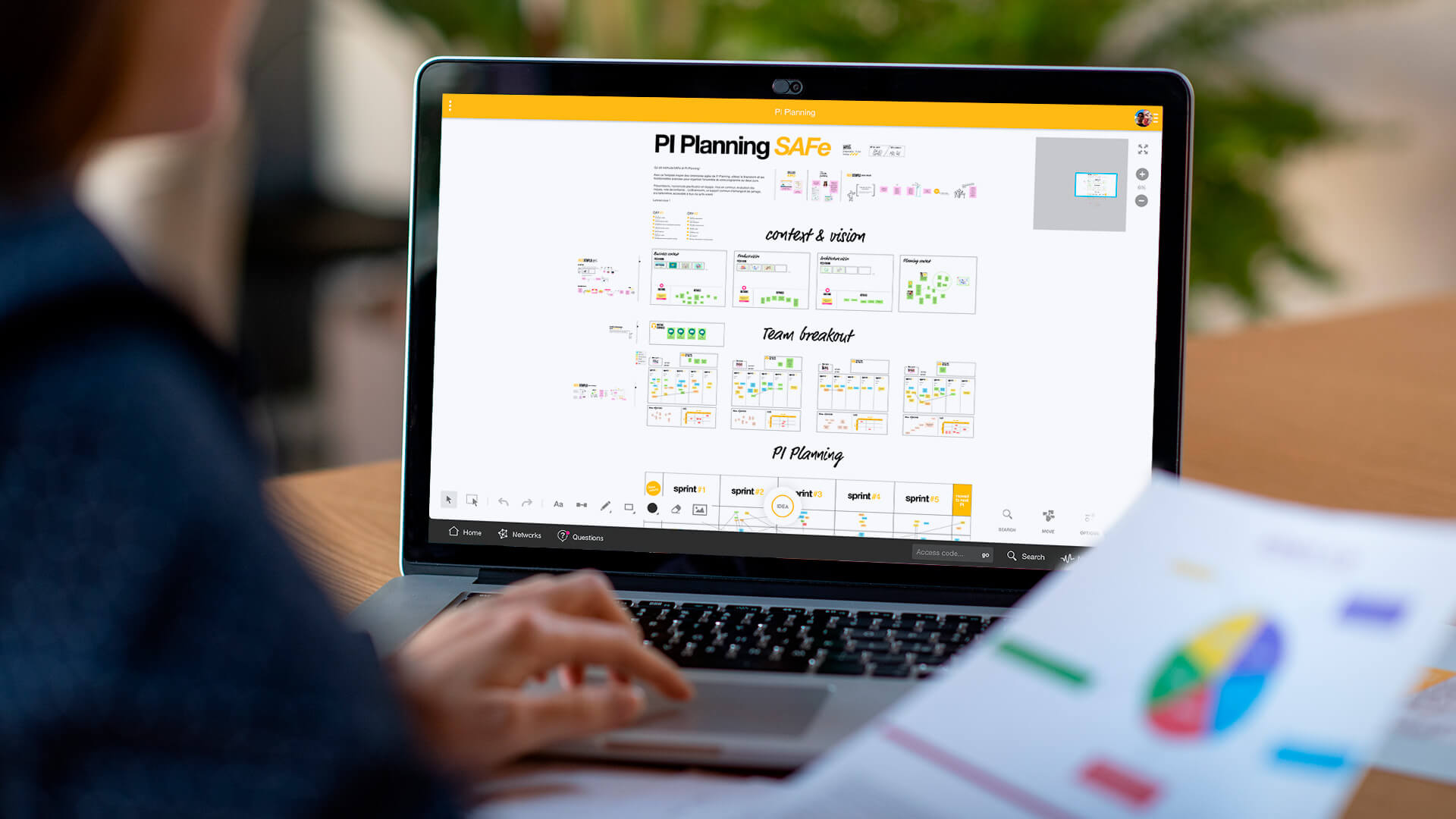PI Planning: Implement agile and large-scale strategies
Published on June 23, 2025
PI Planning: Implement agile and large-scale strategies


With the PI Planning template, agile project management methods can be easily integrated into any multi-team project. PI Planning is vital to align an organization to a shared mission and vision.

If you are not familiar with PI Planning yet, you should know that it is one of the crucial elements of SAFe (Scaled Agile Framework). What is it exactly? It’s an ambitious collaborative way of working, which aims to integrate the concept of agility on a large scale. For multi-team projects or even company-wide, SAFe provides an all-encompassing framework for traditional agile methods, such as Scrum, for example.
But how does SAFe differ from the well-known Scrum meeting template? It's a question of scale. Whereas the Scrum project management method seeks to facilitate information transmission and task management processes within the framework of a single-project team, SAFe takes it to the next level and is all about bringing together all the teams on one vision by making them speak the same language. This language is the language of objectives: these are decided together, by all the teams, so that each individual feels fully involved in the action plan. But it also means providing shared tools for everyone, which makes SAFe longer to implement than a single-project method like Scrum.
Often, when an organization wants to implement SAFe, it needs to undergo a fundamental transformation. This is where PI Planning comes in: more than an agile meeting, it is a crucial event to make SAFe a success in the long term.


With SAFe, build up a clear large-scale vision as a team.
One of the key features of launching the SAFe system within an organization is that a Program Increment Planning meeting differs from other traditional Scrum event formats for two reasons.
Until now, PI Planning always took place in a room, with all those involved physically present. But with the advent of remote work, it is becoming increasingly common for this event to take place, at least in part, digitally and remotely. Klaxoon's Board has numerous interactive collaboration tools, including this template, for your remote PIP meetings. Each participant feels involved as if everyone were in the same room!
What makes PI Planning interesting is its impressive scale. It’s an event bringing together everyone in an organization, to improve their collaboration in the long term. At the end of these 2 days, you come up with shared objectives that will be pursued not only by the company’s upper echelons, but by all its operational players, on a daily basis.
While this is the long-term objective of a Program Increment Planning event, it can also help in a host of other ways to achieve the ideal vision of agility in multi-team project management or within an organization.
PI Planning is a high stakes event, an ambitious step for all the organizations implementing it within their teams. And there are several specific points to take into consideration to make sure these special 2 days go well.
While ultimately PI Planning is meant to become a project planning tool, it still requires a certain amount of preparation to make it a success.
One obvious benefit of this large-scale meeting is its ability to improve communication channels between different teams and entities in any organization. Meeting remotely or in person, seeing each other (even on interposed screens) for 2 days to determine how the group is managed is always intense. It will make everyone want to carry on working hard to ensure that information transmission between all the teams is more transparent and fluid.
Moreover, the deeply visual nature of a PI Planning event will benefit everyone during these 2 days. A template like the one that Klaxoon proposes here is a visual project management tool that will enable everyone to better assimilate the vision established together by the whole group in the long term. In addition, everyone will be able to access the document at any time, so every team in the organization is on the same page.
Looking for an example of project planning using Board for your PI Planning? Discover the Program Boards used by large groups such as Schneider or Renault, by clicking on the template above.
That's it, you're ready to start preparing a PI Planning event! There are a few essential steps and you can find out all about them in the template above, where step-by-step instructions are included.
The day begins with a presentation of the business context. This is a kind of snapshot of the business: typically, a senior executive tells the teams how the organization or project is currently doing and how it is meeting (or not) the clients' current expectations.
Then, the focus turns to the current situation in more detail, with the product vision. The facilitator, a product manager for example, presents the vision of the program and the direction in which it should be taken. If there have already been previous iterations of this PI Planning, they can point to possible changes in task management.
The next part is to present the vision of the program architecture or architecture vision. Then comes the planning context, where teams start thinking about task planning. Tasks range from needs to objectives and features to be put in place.
The second part of Day 1 is to finalize this schedule: these are the team breakouts. Finally, the day ends with a draft plan review, which has been drawn up together.
At any time during the PI Planning, anyone can ask a question, using the Questions feature on Klaxoon’s Board and on this template.
The second day of a PI Planning event is when the different teams finalize the task planning outlined the day before. Program increment objectives assigning business values to each point of the program, but also identifying risks, dependencies and potential obstacles to the successful implementation of the program: all this is discussed on Day 2.
In the Klaxoon PI Planning template, every team can develop its contribution to each of the 5 iterations that make up a program increment. If necessary, a plan rework can be carried out. All team members must be aligned with the agreed objectives. These can then be truly embodied by the teams every day, using daily task lists like those proposed by Klaxoon in their agile template library, for example.
At the end of the day, there is a group-wide confidence vote to ensure that everyone is happy with the key points set out over the past two days. A planning retrospective is also created together at the end of the PI Planning, to determine what worked well and what will need to be challenged for the next iterations of this large-scale agile event.
The PI Planning template takes planning and monitoring to the next level. Use it to make sure all the program teams are aligned with each other and committed to the goals created together, so agile methods can be implemented organization-wide.
SAFe Members can learn more about PI Planning, and anyone can read the SAFe guidance for more information.
Get inspired by other templates from the same categories
Unlock your teamwork potential